When someone thinks about the Annapurna Base Camp Trek, they often picture breathtaking views and charming villages that seem to come straight from a postcard. It’s not just about the stunning landscapes, though; it’s also a chance to soak up the vibrant Nepali culture along the way. With a well-planned itinerary, trekkers can enjoy hearty meals and cozy lodgings, making the experience both adventurous and comfortable. But what should trekkers really know before hitting the trails? The essential gear, local customs, and health tips could make all the difference on this epic journey.
Key Points
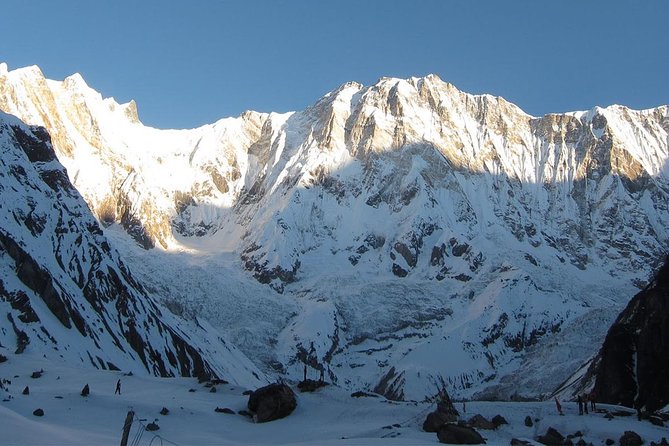
- The Annapurna Base Camp trek offers stunning landscapes and rich cultural experiences in Nepal, starting from Kathmandu.
- Key highlights include visits to vibrant villages, breathtaking views, and a special farewell dinner with a Nepali cultural dance show.
- Essential permits for the trek include the Annapurna Conservation Area (ACAP) and Trekkers Information Management System (TIMS), totaling around $60.
- Proper gear is crucial: sturdy hiking boots, layered clothing, a good sleeping bag, and trekking poles ensure comfort and safety during the trek.
- Gradual acclimatization and hydration are vital for health, while a dedicated guide enhances the experience with local insights and support.
It's also worth checking out some other tours and experiences nearby.
Overview of Annapurna Base Camp
Annapurna Base Camp is a stunning trek that takes adventurers through breathtaking landscapes, vibrant villages, and up close to some of the highest peaks in the world, all while soaking in the rich culture of Nepal.
The journey kicks off in Kathmandu, where trekkers can enjoy local life before heading to the trail. Along the way, they’ll encounter charming tea houses, friendly locals, and unique wildlife.
It’s essential to pack wisely—comfortable hiking boots and layered clothing are must-haves. Plus, don’t forget to embrace the local cuisine; trying dal bhat is a rite of passage!
All in all, this trek offers a perfect blend of adventure, culture, and stunning natural beauty that keeps adventurers coming back for more.
Trek Itinerary Highlights
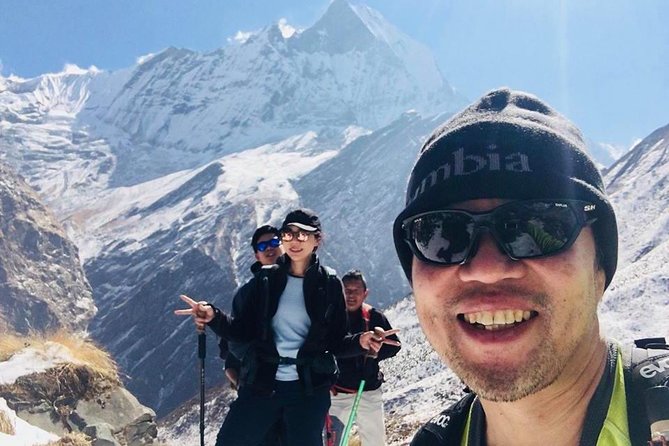
Kicking off the trek, adventurers can expect a well-structured itinerary that blends stunning views, cultural encounters, and plenty of opportunities to savor the local cuisine. Each day promises a mix of exhilarating hikes and charming village stops that offer a taste of Nepali hospitality.
Here’s a quick glance at some highlights:
| Day | Highlights |
|---|---|
| Day 1 | Drive to Pokhara, explore lakeside |
| Day 2 | Trek to Ghandruk, visit local school |
| Day 3 | Ascend to Chhomrong, enjoy sunset views |
| Day 4 | Reach Himalaya Hotel, stunning vistas |
| Day 5 | Trek to ABC, soak in panoramic beauty |
This itinerary ensures trekkers soak in the breathtaking landscapes while connecting with the warm-hearted locals along the way!
Included Meals and Accommodations
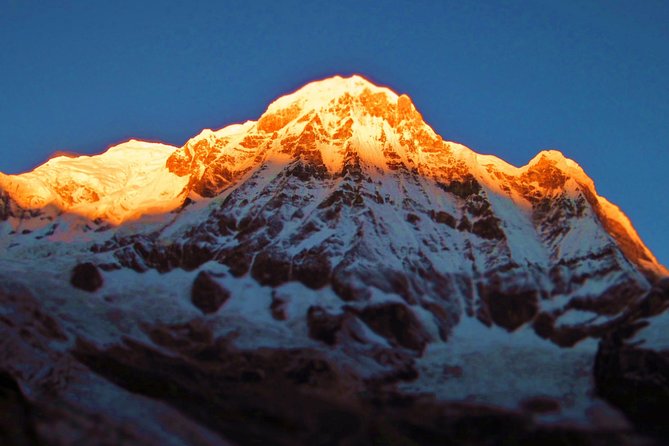
Trekkers can look forward to a delightful array of meals and cozy accommodations that enhance their experience in the heart of the Himalayas.
Each day, they’ll enjoy breakfast, lunch, and dinner, including a special farewell dinner featuring a vibrant Nepali cultural dance show. The meals reflect local flavors, giving trekkers a taste of authentic Himalayan cuisine.
When it comes to accommodations, trekkers will stay in deluxe hotels in Kathmandu and Pokhara, while enjoying comfortable lodges and tea houses during the trek.
These cozy spots provide a warm atmosphere after a long day of hiking. It’s a perfect way to unwind and connect with fellow adventurers, making the journey even more memorable.
Necessary Permits for Trekking
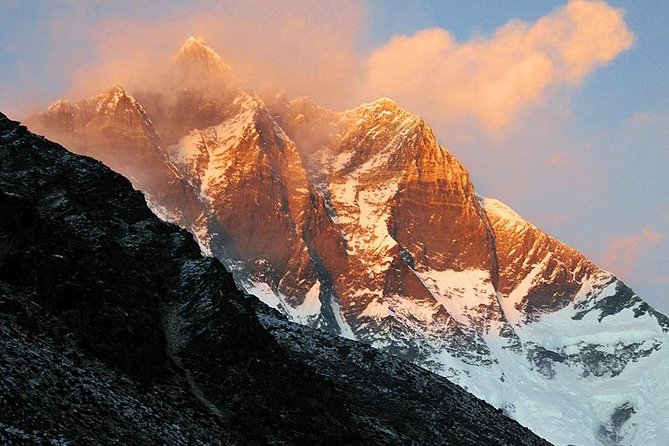
Before hitting the trails, obtaining the necessary permits is crucial for a smooth and enjoyable trekking experience in the Annapurna region. Trekking permits not only keep trekkers safe but also help protect the stunning landscapes. Here’s a quick breakdown of the essential permits needed:
| Permit Type | Cost (USD) | Validity Period |
|---|---|---|
| Annapurna Conservation Area (ACAP) | $30 | Valid for 10 days |
| Trekkers Information Management System (TIMS) | $20 | Valid for duration of trek |
| Local Government Permit | $10 | Varies per region |
| Special Area Permit (if required) | $50 | Varies, check locally |
| Guide/Porter Permit (if hiring) | $10 | Valid for duration |
Essential Equipment and Gear
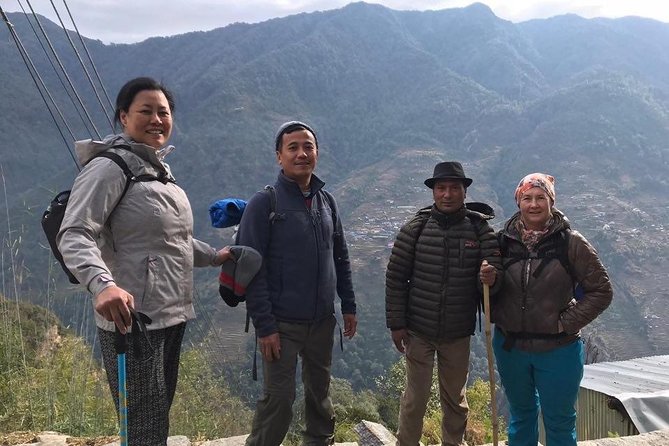
Packing the right equipment and gear is essential for a successful and enjoyable Annapurna Base Camp Trek, ensuring trekkers stay comfortable and safe amid the stunning Himalayan backdrop.
Trekkers should invest in a sturdy pair of hiking boots, a good-quality sleeping bag, and a waterproof jacket to tackle unpredictable weather.
Layering clothing is key, so pack moisture-wicking shirts and warm layers.
Don’t forget a reliable backpack, trekking poles, and sunscreen!
A first aid kit can be a lifesaver, and a reusable water bottle will keep hydration in check.
Lastly, a camera’s a must for capturing breathtaking views, and a bit of local currency for snacks at tea houses will make the experience even more enjoyable.
Health and Safety Guidelines
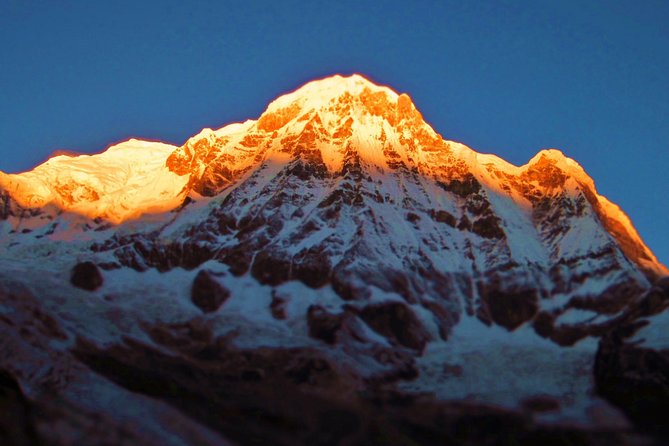
Staying healthy and safe on the Annapurna Base Camp Trek is crucial for enjoying the adventure, so it’s wise to prepare for altitude changes and ensure a good fitness level before hitting the trails.
Travelers should acclimatize gradually, taking breaks and staying hydrated to fend off altitude sickness. It’s also a smart move to pack a basic first aid kit and essential medications. Knowing one’s limits is key; if someone feels unwell, they should communicate with their guide.
Plus, warm clothing is a must, as temperatures can drop unexpectedly. Respecting local customs and the environment enhances the experience, so travelers should embrace the culture and leave no trace behind.
With these guidelines in mind, trekkers can focus on the stunning scenery ahead.
Customer Support Details
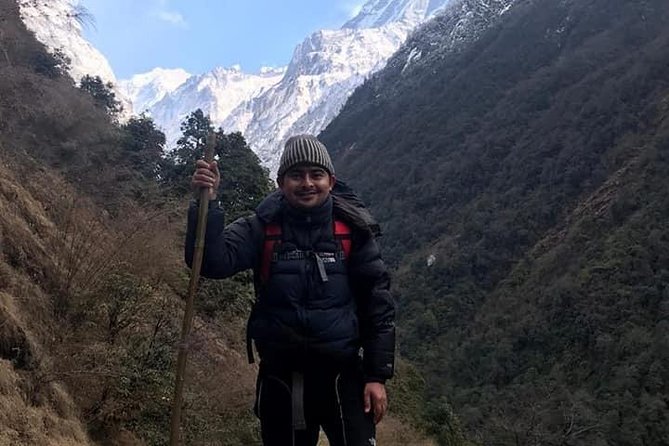
Travelers can expect top-notch support throughout their Annapurna Base Camp adventure, with a dedicated guide ready to assist from the moment they arrive at Tribhuvan Airport.
They’ll be greeted with a friendly face holding a nameplate, making it super easy to kick off the journey.
The guide’s not just there for navigation; they’re a treasure trove of local tips, cultural insights, and safety advice. Whether it’s finding the best local eats or helping with gear, they’ve got it covered.
Plus, the responsive organizer is just a message away for any questions or concerns.
With this level of support, trekkers can focus on soaking up the stunning views and unforgettable experiences that await them.
Cancellation and Pricing Information
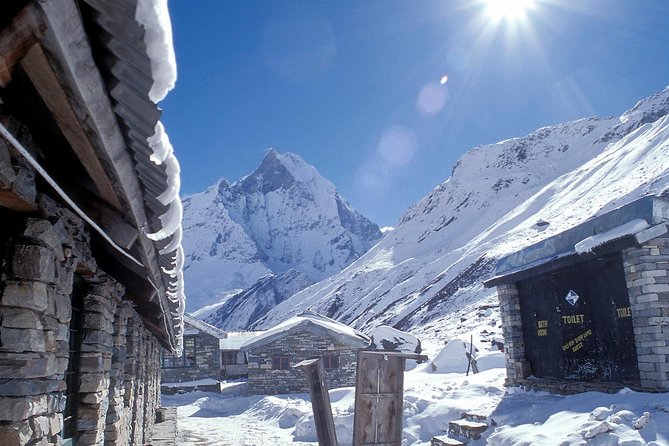
For those planning their Annapurna Base Camp trek, understanding the cancellation policy and pricing details can make all the difference in ensuring a smooth adventure. It’s great to know that cancellations are free up to 24 hours before the trek starts, offering flexibility for last-minute changes. Pricing starts at €938.85, which includes meals, accommodations, and guides.
Here’s a quick breakdown:
| Item | Details | Price |
|---|---|---|
| Base Price | Starting point for trek | €938.85 |
| Cancellation Policy | Free up to 24 hours | N/A |
| Max Travelers | 15 per tour/activity | N/A |
Here's a few more nearby tours and experiences we think you'll like.
Frequently Asked Questions
What Is the Best Time to Trek to Annapurna Base Camp?
Heard the best times for trekking are spring and autumn. During these seasons, the weather’s milder, skies are clearer, and the stunning views of the mountains truly shine. Plus, it feels festive with fellow trekkers around!
How Challenging Is the Annapurna Base Camp Trek?
The trek’s definitely challenging! It tests endurance with steep ascents and varying altitudes. But, it’s totally worth it for the stunning views and rich culture. Plus, the camaraderie with fellow trekkers makes it unforgettable!
Are There ATMS or Cash Withdrawal Facilities on the Trek?
He’s got to be prepared; there aren’t ATMs on the trek. It’s best to withdraw enough cash beforehand. Local tea houses might accept cards, but cash is king in these remote areas.
Can I Charge My Electronic Devices During the Trek?
He wondered if he could charge his devices on the trek. Most lodges offer charging facilities, but he should bring a power bank just in case. It’s a great chance to enjoy the stunning scenery!
What Should I Do if I Experience Altitude Sickness?
If they experience altitude sickness, they should descend immediately, hydrate well, and rest. It’s crucial to communicate symptoms to their guide, who can provide support and ensure everyone’s safety during the trek.
Not for you? Here's more of our most recent tour reviews happening neaby
- Kathmandu Full-Day Private Tour With Pick up
- Nepali Cooking Class & Momo Making in Thamel With Pickup Option
- Kathmandu Heritage Tours (Kathmandu City Tour Full Day)
- Mardi Himal Yoga Trek
- 10 Days Annapurna Base Camp Trekking
- Manaslu Circuit Trek and Side Trips
- 6 Nights 7 Days Nepal Tour
- Ganja-la Chuli (Naya Kanga) Peak Climbing
- Annapurna Base Camp Private Short Trek
- Kathmandu Valley Rim Trekking – 3 Days
- 14 Days Everest Base Camp Trek
- 10 Days Everest Base Camp Trek
- Langtang Valley Trek Nepal.
- Everest Mountain Flight Tour With Ticket and Luxury Vehicle
- Nepal: Lhasa-Kathmandu Mountain Bike Tour
Recap
The Annapurna Base Camp Trek is an incredible adventure that combines breathtaking scenery with rich cultural experiences.
With the right gear, a solid itinerary, and a spirit of adventure, trekkers can fully enjoy this amazing journey.
It’s not just about reaching the base camp; it’s about soaking in the stunning landscapes and vibrant local life along the way.
So, lace up those boots, pack your essentials, and get ready for a trek of a lifetime in the Himalayas!
